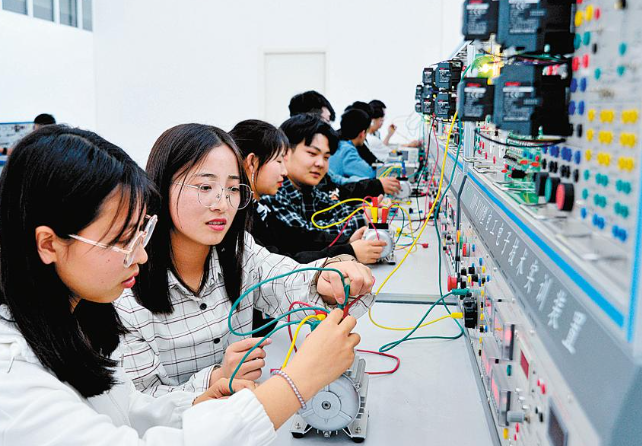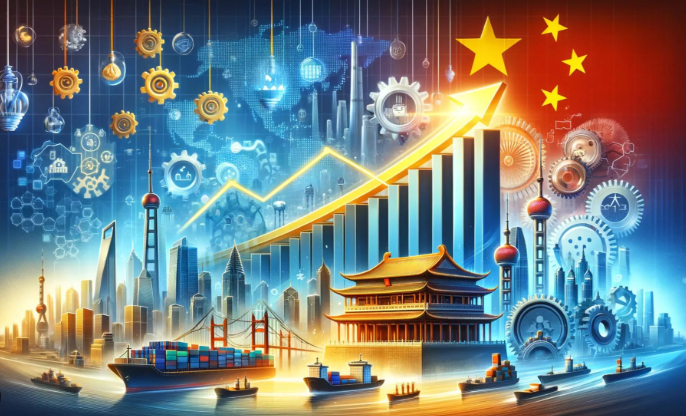Few nations have transformed as rapidly as China. In just four decades, it evolved from a primarily agrarian society into a global economic powerhouse, leading in technology, infrastructure, and innovation. (China’s Great Leap)
But what drives China’s progress? Beyond policy and planning, it’s a story about mindset, vision, and culture — deeply rooted in centuries-old values and modern pragmatism.
The Vision That Drives China’s Growth (China’s Great Leap)
China’s rise was not by chance. Since Deng Xiaoping’s “Reform and Opening-Up” (1978), the nation has blended market mechanisms with state strategy, creating a unique model called “socialism with Chinese characteristics.”

Key Pillars of China’s Vision:
- Long-term planning: Every five years, China’s government releases detailed roadmaps for growth.
- Collective progress: The success of the nation outweighs individual ambition.
- Technological independence: Heavy investment in R&D, AI, and manufacturing.
- Education and discipline: Seen as moral duties and paths to national rejuvenation.
The “Made in China 2025” plan and “China Dream” vision are clear examples — aiming for leadership in robotics, clean energy, AI, and global influence by 2049.
The Chinese Mindset: The True Engine of Success

1. Hard Work and Endurance
The Chinese concept of 吃苦耐劳 (chīkǔ nàiláo) — “to endure hardship” — defines their work ethic.
Students study 12 hours a day for the Gaokao, entrepreneurs work the “996 schedule” (9 a.m.–9 p.m., six days a week), and ordinary citizens embrace sacrifice for collective prosperity.
2. Pragmatism Over Ideology
Deng Xiaoping once said, “It doesn’t matter whether the cat is black or white, as long as it catches mice.”
This embodies China’s flexible, results-driven approach — adopting any system or method that brings tangible progress.
3. Collective Thinking
Influenced by Confucian values, Chinese culture emphasizes harmony, respect for hierarchy, and unity.
This collective mindset enables large-scale mobilization — whether it’s building a high-speed rail network or fighting a pandemic.
Milestones of China’s Economic and Technological Progress (China’s Great Leap)
1. Economic Transformation
- GDP Growth: From $150 billion (1978) to $17.5 trillion (2024) — a 100x increase.
- Poverty Reduction: Over 800 million people lifted out of poverty, a global record.
- Trade Leadership: China is the world’s largest exporter and a major player in global logistics.

2. Infrastructure Marvels
- Over 40,000 km of high-speed rail — the world’s longest network.
- The city of Shenzhen transformed from a fishing village to a global tech hub in just four decades.
- The Belt and Road Initiative (BRI) connects over 150 countries through trade and infrastructure.
3. Innovation and Technology (China’s Great Leap)
- BYD overtook Tesla as the world’s top EV seller in 2023.
- Huawei, Alibaba, and Tencent lead in telecom, e-commerce, and AI.
- China produces 70% of global solar panels and leads in renewable energy deployment.
- The Chang’e-4 mission (2019) made China the first nation to land on the far side of the Moon, and Tiangong Space Station showcases its growing space ambitions.

China’s Global Strategy: Building Influence Through Cooperation (China’s Great Leap)
China promotes a “Peaceful Rise” — growing power without domination.
Through the Belt and Road Initiative, BRICS partnerships, and the Asian Infrastructure Investment Bank (AIIB), China invests in roads, ports, and digital infrastructure across Asia, Africa, and Europe.
This approach, often called “infrastructure diplomacy,” strengthens economic ties and soft power.
Education and Innovation: The Core of China’s Future (China’s Great Leap)

Education is the engine of Chinese progress.
- Over 4.7 million STEM graduates are produced annually — the most in the world.
- Shanghai’s students consistently top the OECD’s PISA rankings in math and science.
- Government funding for AI, quantum computing, and biotech exceeds $70 billion annually.
Universities, research institutes, and private firms collaborate tightly — creating a dynamic ecosystem of innovation and entrepreneurship.
From “Made in China” to “Created in China” (China’s Great Leap)
China’s next mission is to transition from being the world’s factory to the world’s innovator.
This shift focuses on creativity, sustainability, and intellectual leadership — with advancements in:
- Artificial Intelligence
- Green technology
- Space exploration
- Biotechnology
Rather than competing for dominance, China advocates for a multipolar world — where progress is shared across nations.
Conclusion: The Power of Mindset and Mission (China’s Great Leap)

China’s rise is not merely about skyscrapers or supercomputers — it’s about mindset and mission.
A culture that values patience, learning, and collective effort has propelled a nation from poverty to prosperity.
While many nations debate, China builds.
While others plan for election cycles, China plans for generations.
That long-term vision — rooted in discipline, unity, and innovation — is what makes China not just a global leader, but a blueprint for sustained progress.
Similar Blogs :



